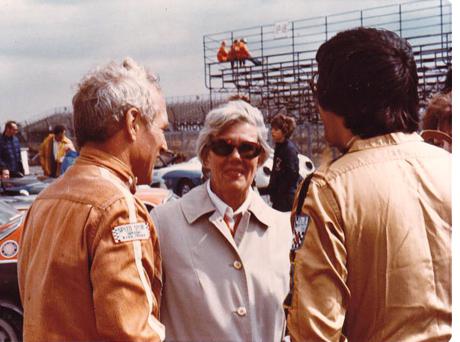I hadn’t talked with Missy and Biff Loomis for a while so it was nice to hear from them this morning. Missy wears bling which dangles and jangles when she dips her minnows out of the bait tank. She usually prefers to talk about fishing and motorcycles and her job on the state so I put down my newspaper and paid attention. Today, she had pizza on her mind.
Undercooked pizza.
They had gotten tied up with customers down on the dock yesterday and didn’t get to eat breakfast until nearly noon. She decided to call in an order for her favorite pizza to The Doughbie Brothers, a friendly neighborhood pizzeria that has combinations you’ve never heard of.
 She drove to the restaurant to find the pie was still in the oven. The Doughbie Brothers guarantee the pick up time; worse, this is the second time they’ve been late. She grumbled a bit and a few minutes later, her order arrived all boxed up and ready to go.
She drove to the restaurant to find the pie was still in the oven. The Doughbie Brothers guarantee the pick up time; worse, this is the second time they’ve been late. She grumbled a bit and a few minutes later, her order arrived all boxed up and ready to go.
Or not.
When she got it home, it was missing several toppings and the crust hadn’t been stretched out so it was all bunched up on one side of the pie. And it wasn’t fully baked.
“That reminds me of the time …” he says as he launches into a story.
We all know someone who does that.
I’m that guy.
SWMBO and I went to First Night Burlington with friends a couple of decades ago. The annual citywide, substance-free party has nearly 100 stage shows, musical acts, and arts activities in 18 or 20 venues to kick off the new year. New Year’s Eve this year will be its 35th anniversary.
A huge number of performers are either from Puffin County or are local favorites so it’s a great show for us. Some events are free and buttons for the rest are available at 65 button outlets around us.
The crowds are large and the lines for food and the church and other venues are often ridiculously long so we opted to drive down to South Burlington to grab a pie at the national chain pizzeria down there.
That chain doesn’t guarantee how long it will take but we didn’t care. We were inside and warm and enjoying ourselves instead of standing in line in the winter deep freeze. Our crust had been stretched out but it wasn’t fully baked.
With a mushy, stretchy, doughy mouthful, I called the waiter over.
“The pizza isn’t done,” I mumbled.
She offered to put it back in the oven.
Everyone at the table knew that wouldn’t work. We’d get back a mushy, stretchy, doughy pie that was really, really hot. And we did.
Anyway, retelling that story is somewhat annoying, particularly to my friend Missy. She’s heard many if not most of my stories but worse, since they’re my stories it means, suddenly, we’re talking about me.
Oops.
 That’s a difficult hurdle for our memories because so many of them are about our own experiences. I do (sometimes) tell stories about what happened to my friend Rufus or to my friend Liz Arden or even to that actor fellow I used to race with, but I don’t know their stories as well as I know my own.
That’s a difficult hurdle for our memories because so many of them are about our own experiences. I do (sometimes) tell stories about what happened to my friend Rufus or to my friend Liz Arden or even to that actor fellow I used to race with, but I don’t know their stories as well as I know my own.
Making connections has always been my creative strong suit (see, It’s still All About Me).
If I needed a particular kind of hydraulic hose for that pilemaker I wrote about last month, I found it by remembering that I had used one on the race car, a hose that I first found in the aircraft industry. I’ve done that all my life. Likewise, if you tell me an undercooked pizza story, I will instantly make the connection to that long ago New Year’s Eve in Burlington. Likewise, if you ask me about living in the Keys, I’ll think of my grandfather who, at 92 years of age, decided to close up shop and move there from our ancestral part of Pennsylvania.
Sadly, we humans have more trouble getting to those memories as we age. I don’t think we forget the stories. We just forget the ways to find them without a little conversational help from our friends.
I certainly needed those triggers to access the stories I’ve related here today. I also certainly hope those triggers keep working so I propose a little thought experiment of those of us of a certain age or older:
When you tell a story, write down the trigger that reminded you of the story
Collect those triggers.
Read the triggers in a couple of years.
Tell the stories again.
Let’s all try to remember to do that. When you send me the results, please list this column in the subject line so I can try to remember why I wanted them.
Meanwhile, I’m having a meatloaf sandwich for lunch!

 In order to get those magazines into your hands, I looked at the existing stackers on the market and found that they couldn’t keep up with the throughput particularly of the thin, fast moving magazines like the two-up Digest or TVGuide. That defined the problem. A number of people on my team and over in the sales offices researched what the market needed and how many we might sell because there was no way we’d spend a gazillion dollars of design time and tool up for a machine that sold three copies. The requirements came out of that research. We dreamed up and discarded a lot of solutions and homed in on the best. One of my designers at the time was arguably the best, most creative machine guy I’ve met anywhere; he did the layout. The guys in the model shop downstairs built a prototype and we tested it right there in our own plant. I installed the first one in, I think, Offenburg Germany.
In order to get those magazines into your hands, I looked at the existing stackers on the market and found that they couldn’t keep up with the throughput particularly of the thin, fast moving magazines like the two-up Digest or TVGuide. That defined the problem. A number of people on my team and over in the sales offices researched what the market needed and how many we might sell because there was no way we’d spend a gazillion dollars of design time and tool up for a machine that sold three copies. The requirements came out of that research. We dreamed up and discarded a lot of solutions and homed in on the best. One of my designers at the time was arguably the best, most creative machine guy I’ve met anywhere; he did the layout. The guys in the model shop downstairs built a prototype and we tested it right there in our own plant. I installed the first one in, I think, Offenburg Germany.
 The
The  In going through my checklist, I sprawled out on the brand new, pillow top, queen-size mattress and took about a nanosecond to realize that was the only part of the trailer that sucked. It made my back hurt to lie down and it made my back hurt to get back up again.
In going through my checklist, I sprawled out on the brand new, pillow top, queen-size mattress and took about a nanosecond to realize that was the only part of the trailer that sucked. It made my back hurt to lie down and it made my back hurt to get back up again.